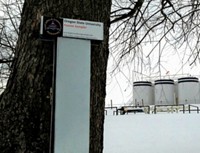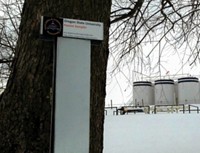Advertisement
Grab your lab coat. Let's get started
Welcome!
Welcome!
Create an account below to get 6 C&EN articles per month, receive newsletters and more - all free.
It seems this is your first time logging in online. Please enter the following information to continue.
As an ACS member you automatically get access to this site. All we need is few more details to create your reading experience.
Not you? Sign in with a different account.
Not you? Sign in with a different account.
ERROR 1
ERROR 1
ERROR 2
ERROR 2
ERROR 2
ERROR 2
ERROR 2
Password and Confirm password must match.
If you have an ACS member number, please enter it here so we can link this account to your membership. (optional)
ERROR 2
ACS values your privacy. By submitting your information, you are gaining access to C&EN and subscribing to our weekly newsletter. We use the information you provide to make your reading experience better, and we will never sell your data to third party members.
Environment
Gulf Spill Burns Posed Little Risk To Health
Gulf Spill: Researchers estimate that surface slick burns produced very low levels of cancer-causing dioxins
by Catherine M. Cooney
November 29, 2010
| A version of this story appeared in
Volume 88, Issue 48

When oil gushed from BP's Macondo well in the Gulf of Mexico this spring and summer, clean-up crews burned surface slicks to limit its environmental impact. Researchers and coastal residents worried that the particle-laden black smoke rising from the fires contained toxic chemicals. Now researchers from the Environmental Protection Agency report in two studies that the health risks were small because the fires released only low levels of cancer-causing polychlorinated dibenzodioxins and polychlorinated dibenzofurans (PCDD/Fs).
Clean-up crews performed 411 so-called "in situ" burns in the Gulf, removing between 220,000 and 310,000 barrels of oil, according to the U.S. Coast Guard. While burns can be an effective tool, they can also produce PCDD/Fs through incomplete combustion of the oil. PCDD/Fs belong to a family of toxic chemicals commonly referred to as dioxins. These chemicals are persistent pollutants that can bioaccumulate and are linked to health problems in humans including cancer and birth defects.
Very little data existed on PCDD/F emissions from oil fires. Officials at the EPA's Office of Research and Development (ORD) wanted to monitor the safety of the Gulf burns and, in particular, the health risks posed by dioxin releases.
Brian Gullett, an ORD researcher, and his colleagues launched a helium balloon carrying an instrument package to collect samples from 27 oil fire plumes over a four-day period in July. The scientists then combined the samples into a single composite and measured concentrations of various dioxin molecules. They calculated that the dioxin emission levels were more than two orders of magnitude lower than those produced by open burning of residential waste, a common dioxin source (Environ. Sci. Technol., DOI: 10.1021/es103554y).
Next John Schaum, another ORD scientist, and colleagues collaborated with researchers at the National Oceanic and Atmospheric Administration's Air Resources Laboratory to calculate the worst-case scenario for health risks posed by this dioxin release. Along with the balloon probe data, their model also incorporated estimates of dioxin levels in Gulf fish and assumptions about pollutant exposure routes such as inhalation and consumption through fish.
For residents along the Gulf coast, the dioxins released by the in situ burns produced a health risk of an additional 6 cancer cases for every 1 trillion people; for oil clean-up workers, the risk was 6 in 100 million; and for children and people who regularly eat fish, it was 2 in 10 million (Environ. Sci. Technol., DOI: 10.1021/es103559w). These risk levels are lower than EPA's threshold for warranting additional study: 1 case in 1 million. Schaum adds that his team intentionally overestimated the risks in their study.
Barry Dellinger, an environmental chemist at Louisiana State University, praises the researchers for undertaking a difficult task. But the study would have benefited from additional sampling time, he says. He also cautions that the study did not account for the burnt oil residue and tar left in the ocean, which could contain dioxins and contaminate the fish that people eat. Though they would still be well below EPA's threshold, adding these considerations, he says, "might have increased -- perhaps doubled -- the estimated risks."




Join the conversation
Contact the reporter
Submit a Letter to the Editor for publication
Engage with us on Twitter